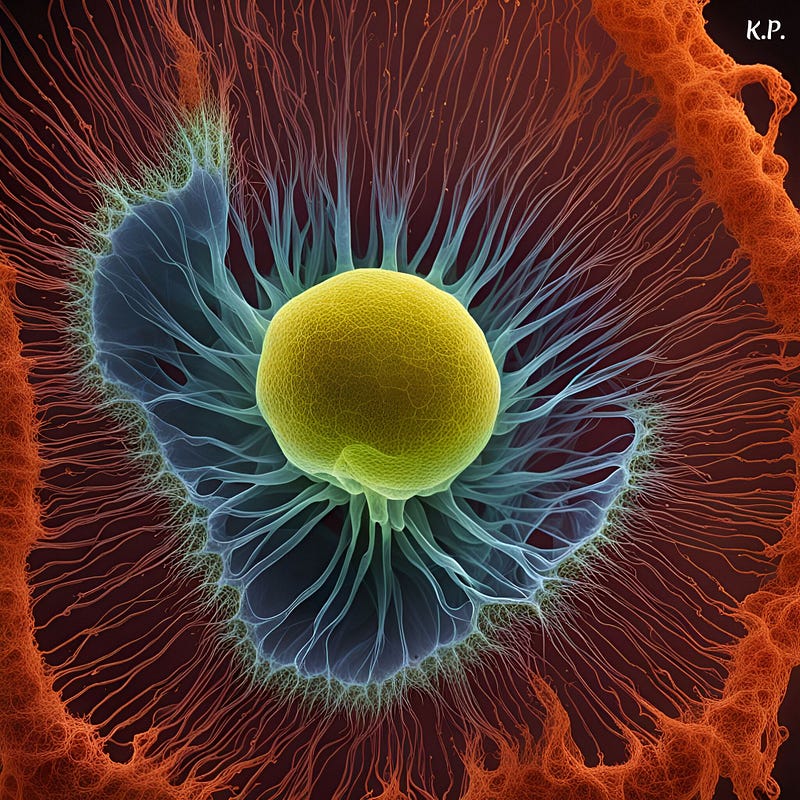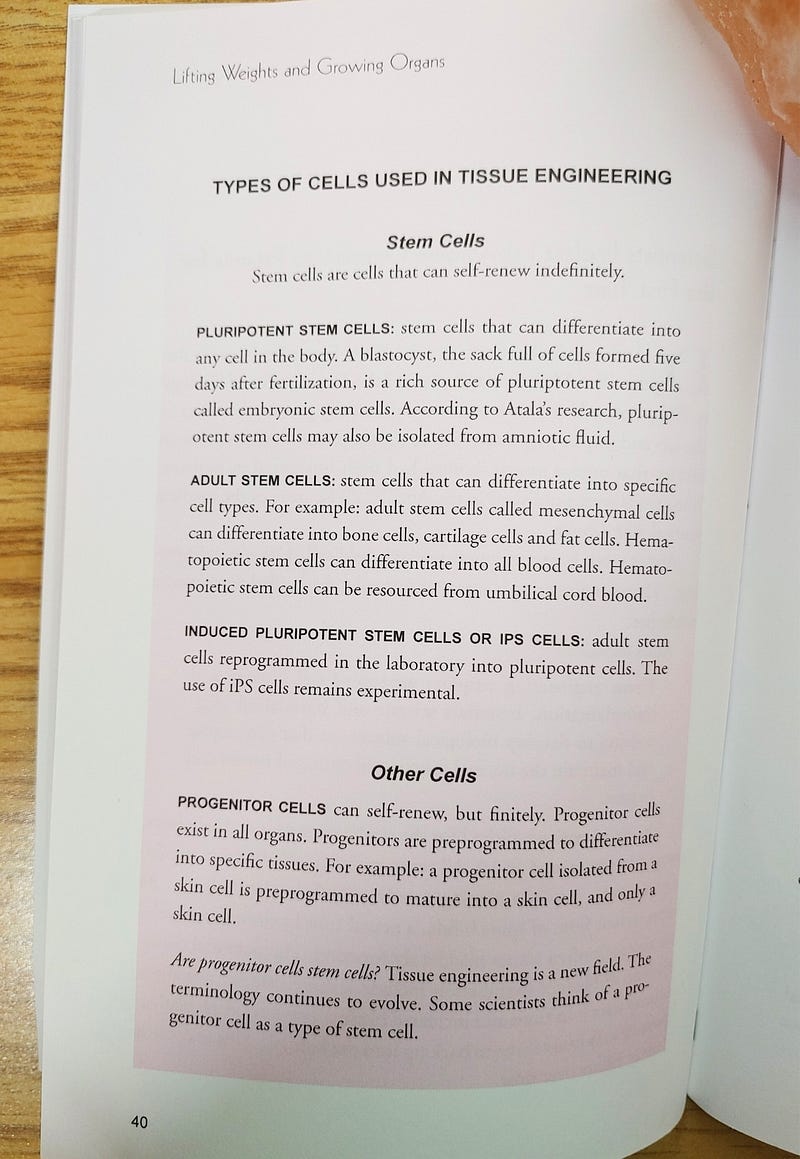Innovative Breakthrough: Lab-Grown Organs Successfully Implanted
Written on
Chapter 1: Introduction to Lab-Grown Organs
In a remarkable achievement, Dr. Anthony Atala, who leads the Wake Forest Institute for Regenerative Medicine and serves as chair of the Department of Urology at Wake Forest University, has made history by successfully cultivating bladders in a lab and implanting them into seven patients. This marks the first instance of in vitro-grown organs being implanted into humans, a milestone documented in the April 4, 2006, edition of The Lancet.
Atala's pioneering work resides within a newly emerging field known as "tissue engineering," which falls under the larger umbrella of regenerative medicine. He describes tissue engineering as:
Tissue engineering integrates principles from cell biology, transplantation, materials science, and biomedical engineering to create biological substitutes that restore and maintain the normal function of damaged organs and tissues.
The study involved seven patients, aged between 4 and 19 years, all of whom were diagnosed with myelomeningocele, the most severe form of spina bifida. This neural tube defect frequently leads to bladder dysfunction, which can result in complications such as leakage, painful urination, urinary tract infections, and increased bladder pressure, potentially leading to kidney failure over time.
Atala noted that each patient was identified as a candidate for cystoplasty, a surgical procedure aimed at reconstructing the bladder. Traditional cystoplasty typically utilizes segments of gastrointestinal tissue, which can lead to complications due to their inherent properties.
"Gastrointestinal tissues are designed for absorption, while bladder tissue is built for excretion," Atala clarifies. This difference can result in a range of issues, including infections and the formation of urinary stones.

Chapter 2: The Process of Creating Lab-Grown Bladders
Step 1: Extracting and Cultivating Cells
As Atala explains, the process begins with cell extraction. A small biopsy of bladder tissue, measuring 1–2 cm², was taken from each patient. The bladder comprises muscle and urothelial tissues, with the latter lining the urinary tract. The team then separated these tissue types and isolated the progenitor cells from each. Each type of cell was placed in a specific growth medium containing essential nutrients, and the cultures were incubated at 37 degrees Celsius—the optimal temperature for human cells.
"With our cell culture techniques, we can expand a single urothelial specimen from 1 cm² to an area equivalent to a football field, approximately 4202 m², within eight weeks," Atala states.
A common concern is whether using cells from damaged organs might yield defective tissue. However, Atala’s research suggests that progenitor cells are "programmed to develop normal tissue, regardless of their origin." Moreover, using autologous progenitor cells—those from the same individual—prevents immune rejection.
In cases where tissue is severely diseased or absent, Atala posits that pluripotent human stem cells may serve as an ideal alternative, as they can transform into nearly any tissue type.
Step 2: Creating the Scaffold
Next, the team calculated the appropriate size for each bladder by scanning the patients' pelvic cavities. Biodegradable materials were utilized to mold a custom scaffold for each patient’s new bladder.

Step 3: Seeding the Scaffold
The scaffolds were coated with muscle cells on the exterior and urothelial cells on the interior. The cells infiltrated the scaffold's pores, after which the seeded scaffolds were placed in growth broth and incubated, allowing the new bladders to develop.
Within three to four days, the bladders had matured and were ready for surgical implantation, following the established protocols for cystoplasty. After a period of seven to eight weeks post-biopsy, the results were promising.
The outcome was noteworthy, with all patients experiencing significant improvements in urinary continence. Atala reported that the seven patients were monitored for five years and continued to demonstrate enhanced bladder function.
"It is fulfilling to witness the improved quality of life in these patients," Atala remarked, indicating that the successful engineering of bladders from autologous tissue is not only feasible but also preferable.
The research team is ambitiously working towards cultivating 30 different body parts, including kidneys, livers, anal sphincters, and even hearts.
The first video titled "How We Are Growing Organs In The Lab? | Dr. Jim Wells | TEDxCincinnati" provides insights into the advancements in organ growth technology and the implications for future medical treatments.
The second video, "Growing human organs in the lab," discusses the science behind lab-grown organs and the various techniques being employed in this innovative field.
SOURCES
Atala, A. (2011). Tissue engineering of human bladder. British Medical Bulletin, 97(1), 81–104. Retrieved from http://dx.doi.org/10.1093/bmb/ldr003
Atala, A., Bauer, S., Soker, S., Yoo, J., & Retik, A. (2006). Tissue-engineered autologous bladders for patients needing cystoplasty. The Lancet, 367(9518), 1241–1246. Retrieved from http://dx.doi.org/10.1016/s0140-6736(06)68438-9
Wake Forest Baptist Medical Center. (2014). Wake Forest Physician Reports First Human Recipients of Laboratory-Grown Organs. Retrieved from http://www.wakehealth.edu/News-Releases/2006/Wake_Forest_Physician_Reports_First_Human_Recipients_of_Laboratory-Grown_Organs.htm
Check Out My Book
Lifting Weights & Growing Organs
Two books make up Lifting Weights & Growing Organs. Lifting Weights recounts how watching the 2008 Beijing Olympics on…
read.amazon.ca
Want To Know What Mistakes I Made Publishing This Book?
Three Mistakes I Made Publishing My First Book
Plus One Thing I Absolutely Nailed
Want To Know More About Me?
About Me
I am a person who ventured into various life experiences, including working in strip clubs and rock bars…
How To Support My Writing
Buy me a protein shake here.
Want to support me with crypto? Here is a link to my crypto profile: karinakarina.x
Sign up to my Substack newsletter here.
Subscribe to my YouTube channel:
Thank you. Please leave a comment.